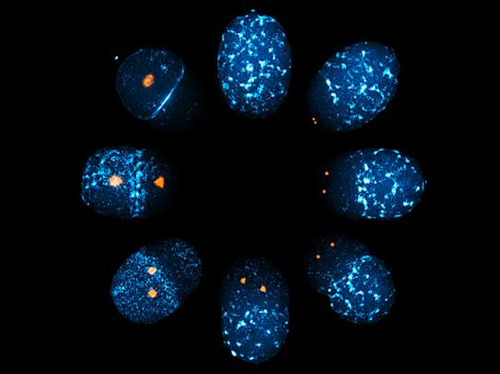
Polar Bearings
A fertilised egg, or zygote starts its developmental journey with two steps – cell division, for growth, and changes in shape or morphology, to form early tissues. Here, in nematode worm zygotes, researchers follow a protein linking these two vital processes – Aurora-A kinase (orange) helps cells to divide, but also defines a cell’s polarity – its inner ‘compass’ used for moving about and shape-shifting. Arranged clockwise from the top, blobs of Aurora-A gradually guide changes in the cytoskeleton (blue) in specific regions of the zygote – these skewed or asymmetric patterns give cells their top bottom, front and rear. At such a fragile stage of life, Aurora-A may balance this asymmetry with the precise symmetry needed for cell division – a balance which may be altered later in life, or in diseases like cancer.
Written by John Ankers
- Image from the Mechanobiology Institute, National University of Singapore
- Department of Biological Sciences, National University of Singapore, Singapore, Republic of Singapore
- Image copyright held by the original authors
- Research published in Developmental Cell, March 2019
You can also follow BPoD on Instagram, Twitter and Facebook
Archive link



Комментариев нет:
Отправить комментарий